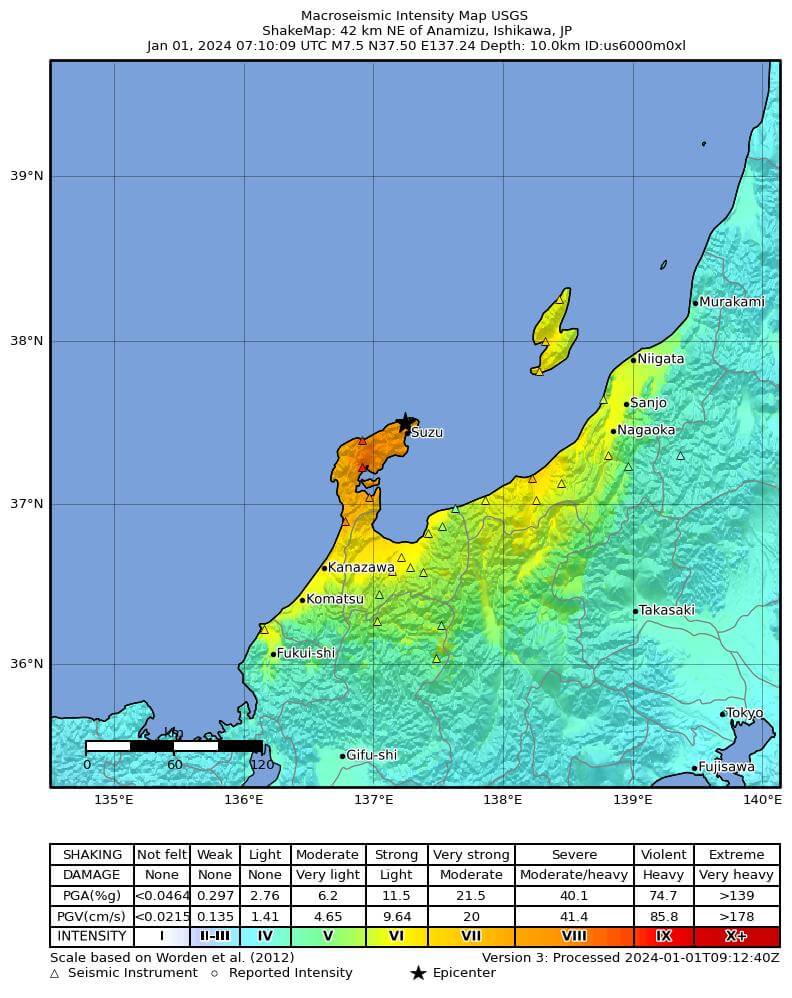A shallow magnitude (Mw) 7.5 earthquake hit western Japan on Jan. 1, 2024, according to the U.S. Geological Survey (USGS). The earthquake caused damage and disruption to cities on the Noto Peninsula in the Ishikawa prefecture.
Modeled Insured Losses Expected To Be Less Than $5B
CoreLogic estimates that insured losses in Japan due to damage from ground shaking, fires following, tsunamis, and liquefaction could be between $1 and $5 billion (144.6 billion and 722.8 billion yen).
This insured loss estimate includes damage to buildings and their contents, as well as business interruption or the costs associated with additional living expenses.
Damage to residential, commercial, industrial, and Kyosai structures are included. Government property; infrastructure such as road and rail networks; water and electric power systems; and oil and gas pipelines are not included.

Initial Japanese reports indicate material damage in the smaller towns and cities nearby the Noto Peninsula, such as Wajima and Suzu. Over 90% of the 5,000 homes in the city may have been damaged or destroyed. However, the earthquake spared major economic centers like Tokyo, reducing the loss potential from this event.
CoreLogic Hazard HQ Command Central™ will continue to analyze the damage left in the aftermath of the Mw 7.5 earthquake in Japan. Additional information may be provided if new data is found.
New Year’s Day Earthquake Overview
The earthquake occurred at a shallow depth of 6.2 miles (10 km) beneath the Earth’s surface at 9:10 p.m. local time (7:10 a.m. UTC), with an epicenter about 71 miles (115 km) northeast of Kanazawa, the capital of Ishikawa, and 187 miles (302 km) northwest of Tokyo.
Seismic intensity map for the Mw 7.5 earthquake in western Japan

The USGS reported violent ground shaking with intensity of IX on the Modified Mercalli Intensity Scale in cities closest to the epicenter. Such an intensity is capable of heavy damage. Shaking intensity as high as VI was reported in Kanazawa, the largest city nearest to the epicenter.
As of Tuesday, Jan. 2, the USGS recorded more than 40 strong aftershocks, with intensities ranging from Mw 6.2 to Mw 4.1.
NHK reported on Jan. 2 that fires following the earthquake burned over 100 buildings in central Wajima, which is located on the Hoto Peninsula in the Ishikawa prefecture. The Japanese Fire and Disaster Management Agency reported a small fire at an industrial facility in Joetsu in the Niigata prefecture following the earthquake, but the fire has since been extinguished.
The Japan Meteorological Agency issued a tsunami warning for the coast along the Ishikawa and Toyama prefectures. However, no significant waves were reported as of Jan. 1.







